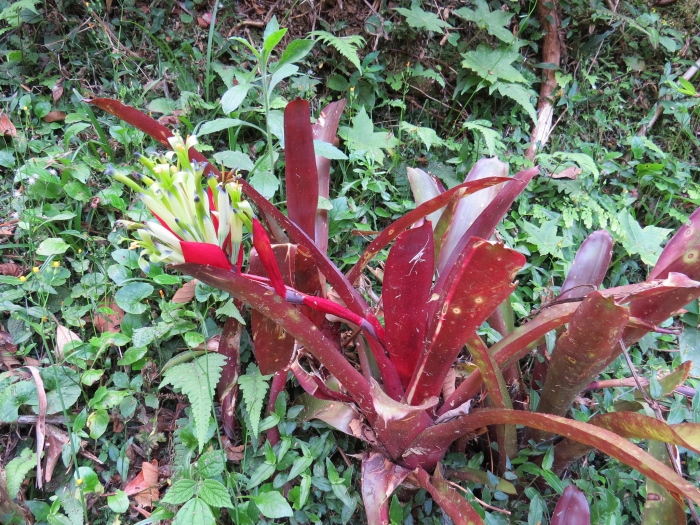Queen’s Tears
(Billbergia amoena)
Queen’s Tears (Billbergia amoena)
/
/

Victor Farjalla Pontes
CC BY 4.0
Image By:
Victor Farjalla Pontes
Recorded By:
Copyright:
CC BY 4.0
Copyright Notice:
Photo by: Victor Farjalla Pontes | License Type: CC BY 4.0 | License URL: http://creativecommons.org/licenses/by/4.0/ | Rights Holder: Victor Farjalla Pontes | Publisher: iNaturalist | Date Created: 2021-08-28T16:31:43-07:00 |













Estimated Native Range
Summary
Billbergia amoena, commonly known as Queen’s Tears or Hardy Queen’s Tears, is an evergreen perennial herb native to the Atlantic Forest and Cerrado biomes of Brazil, where it thrives in the canopy of trees or on the ground in well-drained, humus-rich soils. It typically reaches a height of 2 feet (0.6 meters) and a width of 1 foot (0.3 meters). The plant forms a rosette of narrow, strap-like leaves that are often spotted or banded with shades of purple, red, or white. The pendulous inflorescences, appearing mainly in late winter to early spring, bear showy flowers with green bracts and petals that are blue at the base, transitioning to greenish-yellow at the tips, and are quite striking when in bloom.
Billbergia amoena is valued for its ease of care and the exotic appearance of its flowers and foliage. It is commonly used in cultivation as an ornamental plant in containers, hanging baskets, and as an epiphyte in subtropical and tropical gardens. It prefers bright, indirect light or partial shade and requires a well-draining soil mix designed for epiphytes. While tolerant of a range of light conditions, flower production is best with increased light. It is relatively drought-tolerant once established but appreciates regular watering during active growth. Overwatering or poor drainage can lead to root rot. This bromeliad is not typically prone to serious pests or diseases but can be affected by scale insects and mealybugs.CC BY-SA 4.0
Billbergia amoena is valued for its ease of care and the exotic appearance of its flowers and foliage. It is commonly used in cultivation as an ornamental plant in containers, hanging baskets, and as an epiphyte in subtropical and tropical gardens. It prefers bright, indirect light or partial shade and requires a well-draining soil mix designed for epiphytes. While tolerant of a range of light conditions, flower production is best with increased light. It is relatively drought-tolerant once established but appreciates regular watering during active growth. Overwatering or poor drainage can lead to root rot. This bromeliad is not typically prone to serious pests or diseases but can be affected by scale insects and mealybugs.CC BY-SA 4.0
Plant Description
- Plant Type: Herb
- Height: 1.5-2 feet
- Width: 0.75-1 feet
- Growth Rate: Moderate
- Flower Color: Pink, Green, Red
- Flowering Season: Summer
- Leaf Retention: Evergreen
Growth Requirements
- Sun: Full Sun, Part Shade, Full Shade
- Water: Medium
- Drainage: Medium
Common Uses
Bird Garden, Low Maintenance
Natural Habitat
Native to the Atlantic Forest and Cerrado biomes of Brazil
Other Names
Common Names:
Scientific Names: , Billbergia amoena, Billbergia amoena var. viridis, Billbergia amoena var. minor, Billbergia amoena var. rubra, Billbergia amoena var. robertiana, Billbergia amoena var. stolonifera, Billbergia pallida, Billbergia pallescens, Billbergia wacketii
GBIF Accepted Name: Billbergia amoena (G.Lodd.) Lindl.